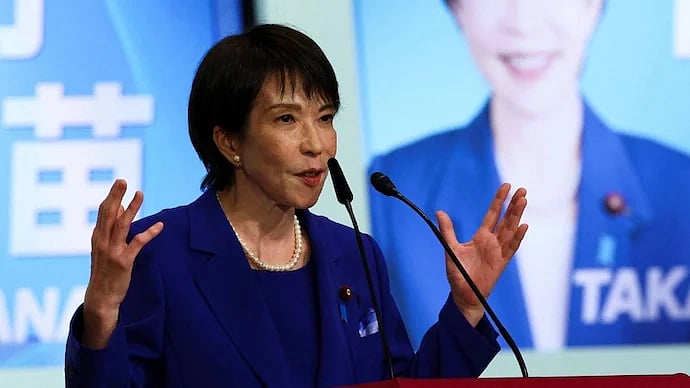Japan is poised to anoint the country’s first woman prime minister, Sanae Takaichi, even as the world’s fourth-largest economy contends with an ageing population and a rise in populist and ultranationalist forces.
The conservative hardliner of more than three decades standing narrowly defeated the minister of agriculture and a political scion in the ruling centre-right Liberal Democratic Party (LDP)’s presidential race on Saturday. Takaichi’s confirmation in her historic new role as premier is expected to proceed smoothly when the Diet (parliament) convenes on the 15th of this month.
Her LDP commands the largest bloc of seats in both houses of parliament, albeit without a majority in either, and could benefit from a fragmented and divided opposition. A one-time TV anchor, who recently told an audience that her goal was to become the “Iron Lady” — in reference to the British former premier Margaret Thatcher — the veteran Takaichi’s mettle will be tested early on multiple fronts.
Foremost among these challenges is Japan’s long-standing political instability since 1990, characterized by the rise and fall of 18 prime ministers, a majority of whom served less than one year. A moment of reckoning for the LDP is the current simultaneous loss of a clear majority in both houses of parliament, unprecedented in the party’s decades-long history, which led to the exit of the outgoing premier, Shigeru Ishiba.
The erosion in its support base could be linked to the mushrooming of parties that tap into popular discontent, such as the ultra-conservative, anti-immigration, and anti-foreigner Sanseito party. In the elections to the country’s upper house in July, Sanseito’s vote share was larger than that of the biggest opposition party, and its tally of seats climbed from 2 to 15.
The LDP’s predicament mirrors that of Europe’s mainstream parties, struggling to claw back disaffected voters while retaining its traditional base among the elderly.
As a fiscal dove and heir to Abenomics — the stimulus policies of low interest rates and fiscal expansion credited to the late prime minister Shinzo Abe — Takaichi has signalled plans for higher spending to stoke demand and raise wages. She has attributed the current uptick in inflation to higher input costs.
However, commentators voice scepticism regarding the effectiveness of such a course, given Japan’s demographic trajectory of sluggish growth, a shrinking population, labour shortages, and stagnant wages.
On the international front, Takaichi’s not infrequent visits to the Yasukuni shrine to honour Japanese victims of WWII, alongside her plans to rewrite the country’s pacifist constitution, are likely to raise hackles in neighbouring China and South Korea.
Later this month, when the new premier hosts US President Donald Trump, the agenda will doubtless feature the substantial investments Tokyo has committed in exchange for a 15 per cent tariff on the country’s exports as part of the recent trade agreement. Any significant revision to those terms is considered highly unlikely.
https://www.freepressjournal.in/analysis/japan-gets-its-first-woman-pm
